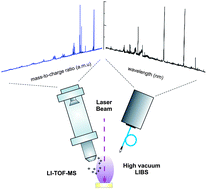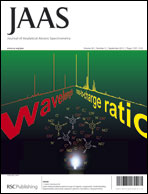Laser-induced plasma spectroscopy of organic compounds. Understanding fragmentation processes using ion–photon coincidence measurements
Abstract
Coincidence detection is of interest to get as much information as possible about transient events occurring in laser induced plasmas. The present work is focused on coincidence ion–


 Please wait while we load your content...
Please wait while we load your content...